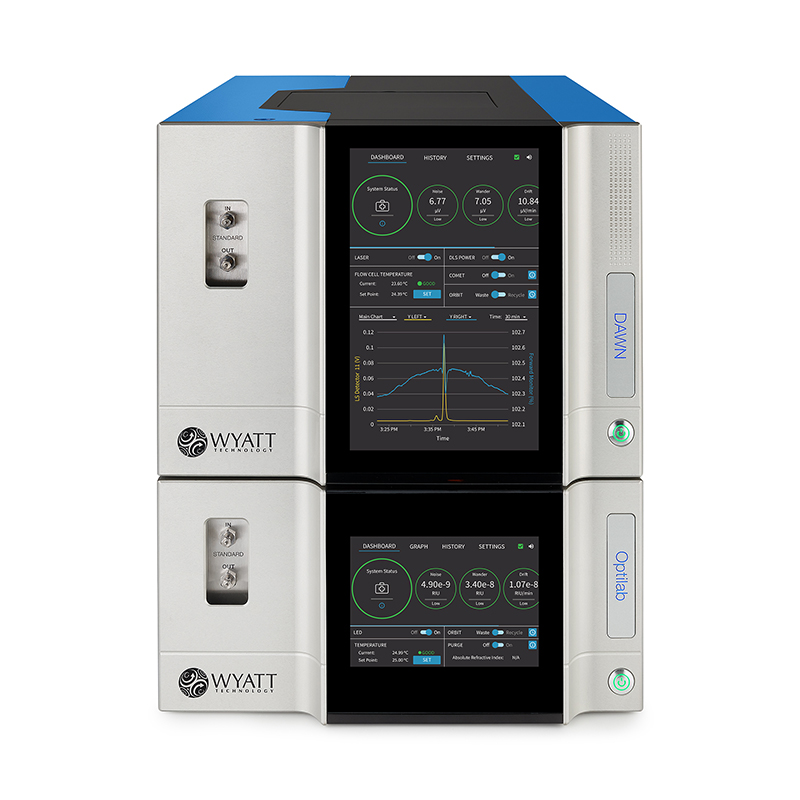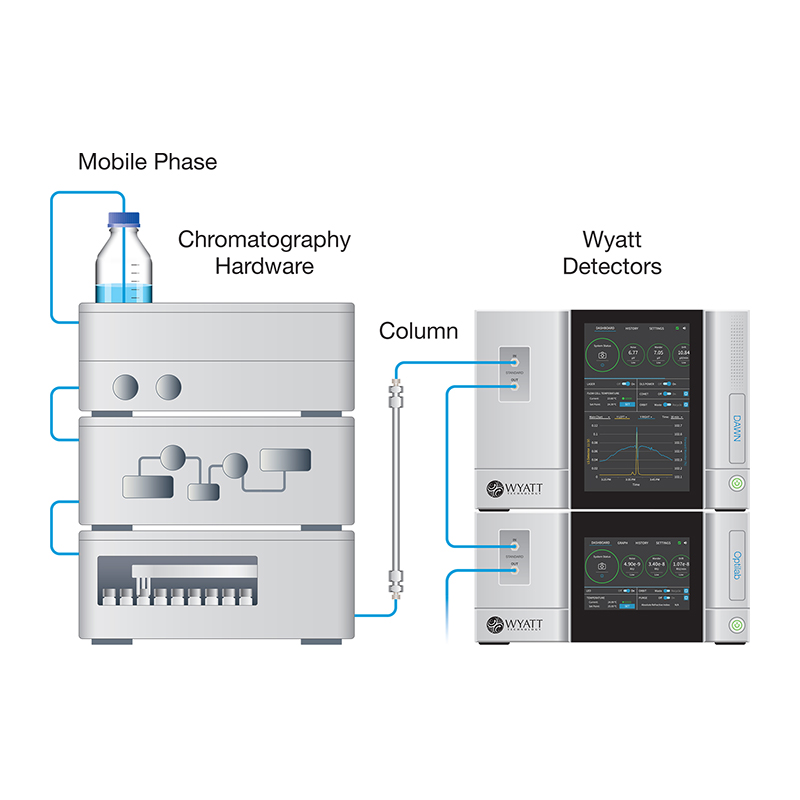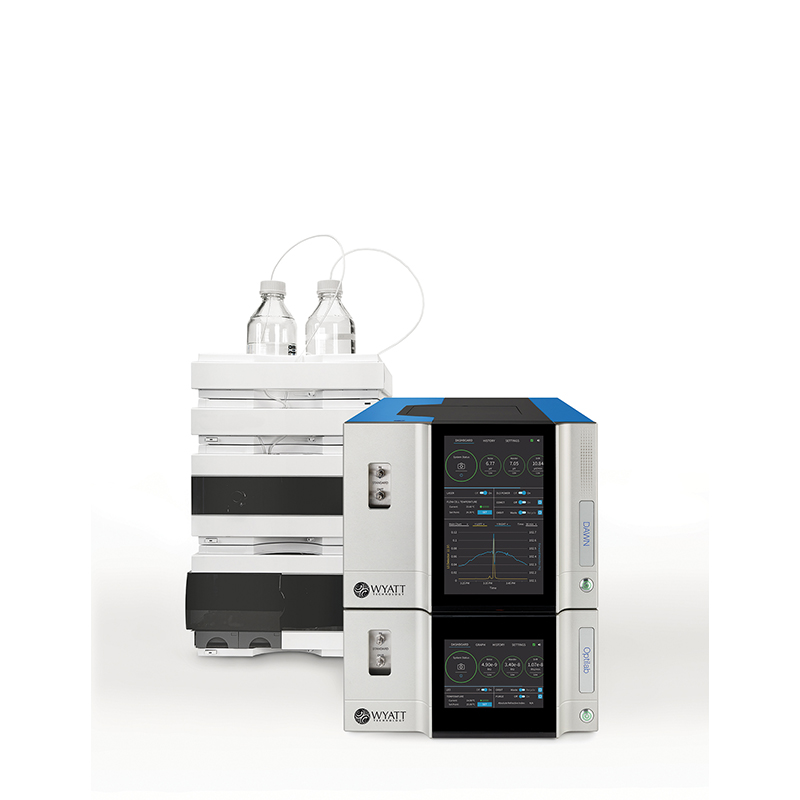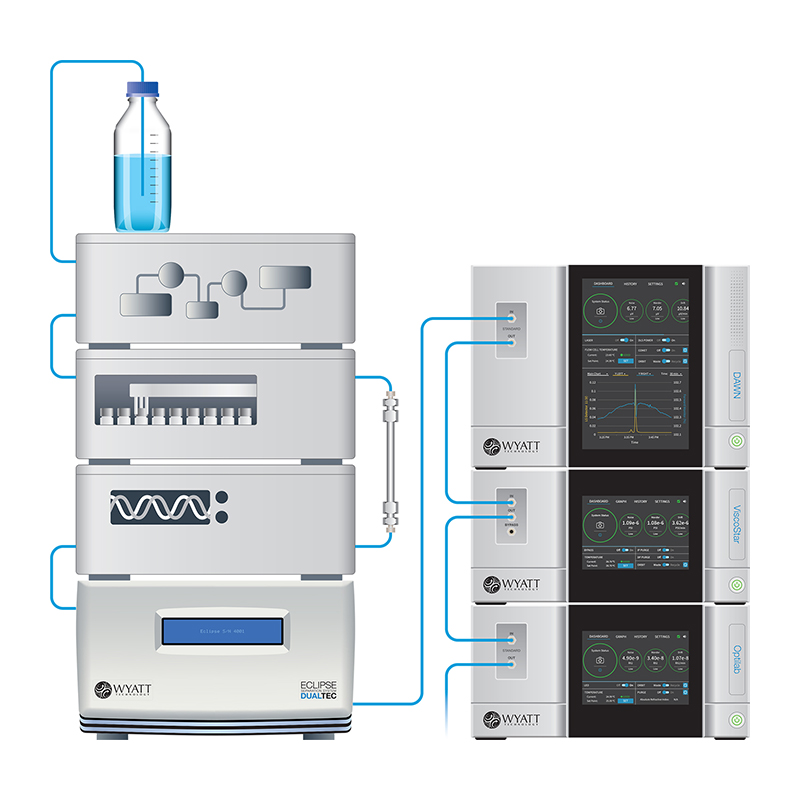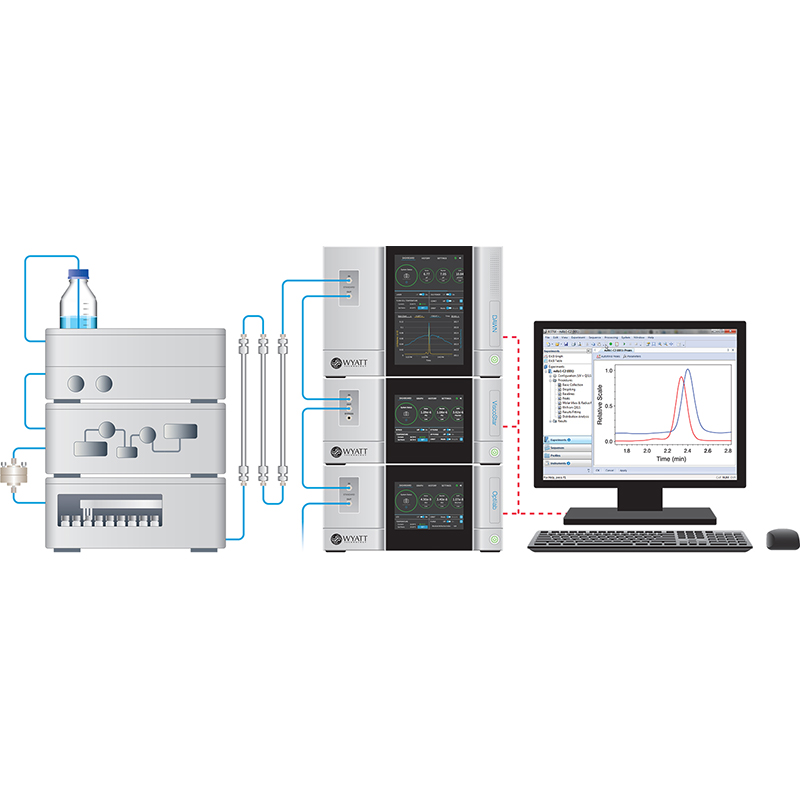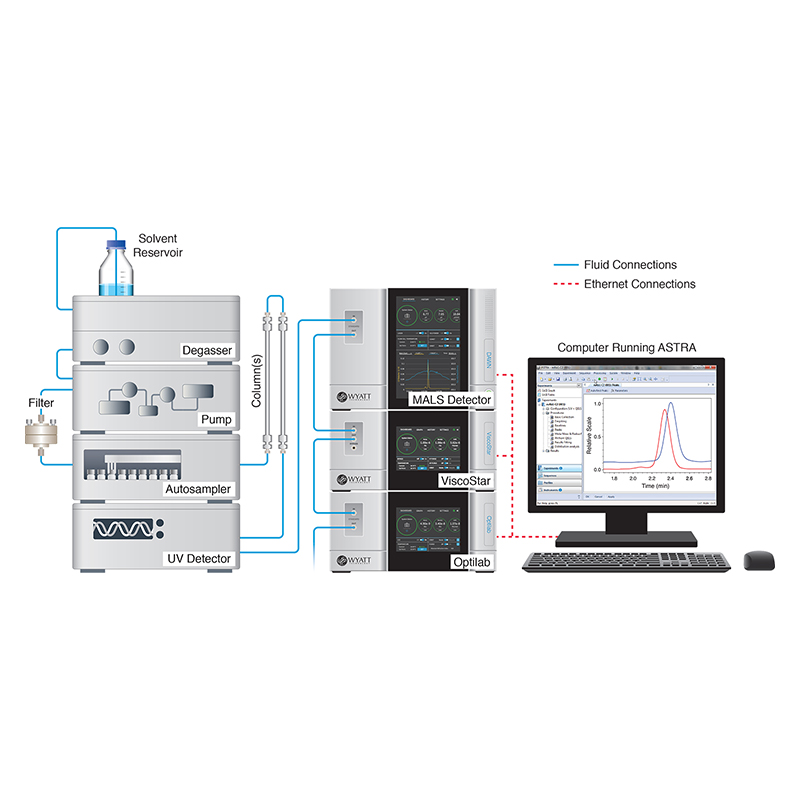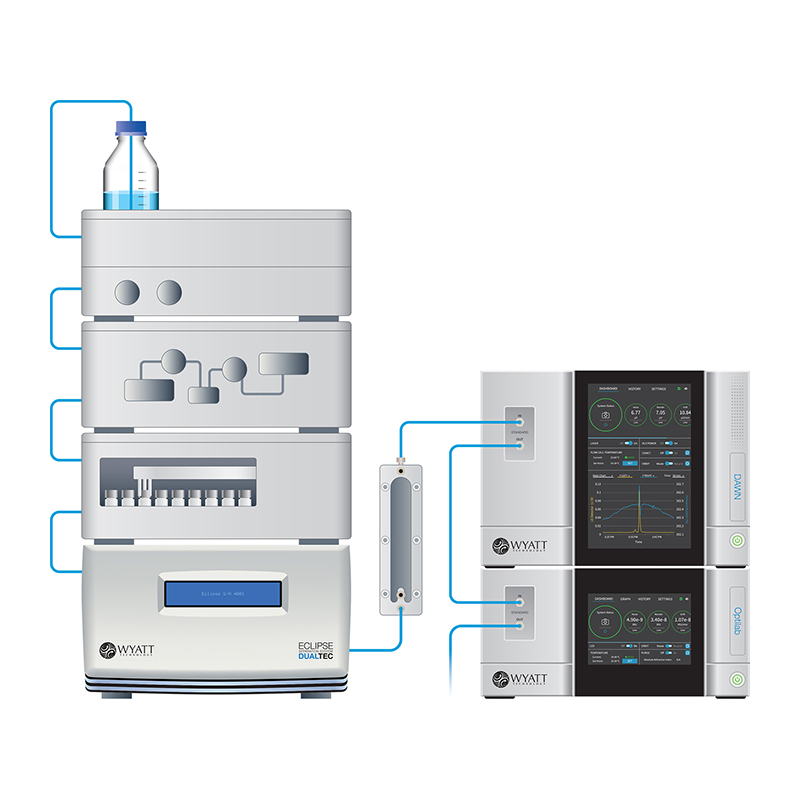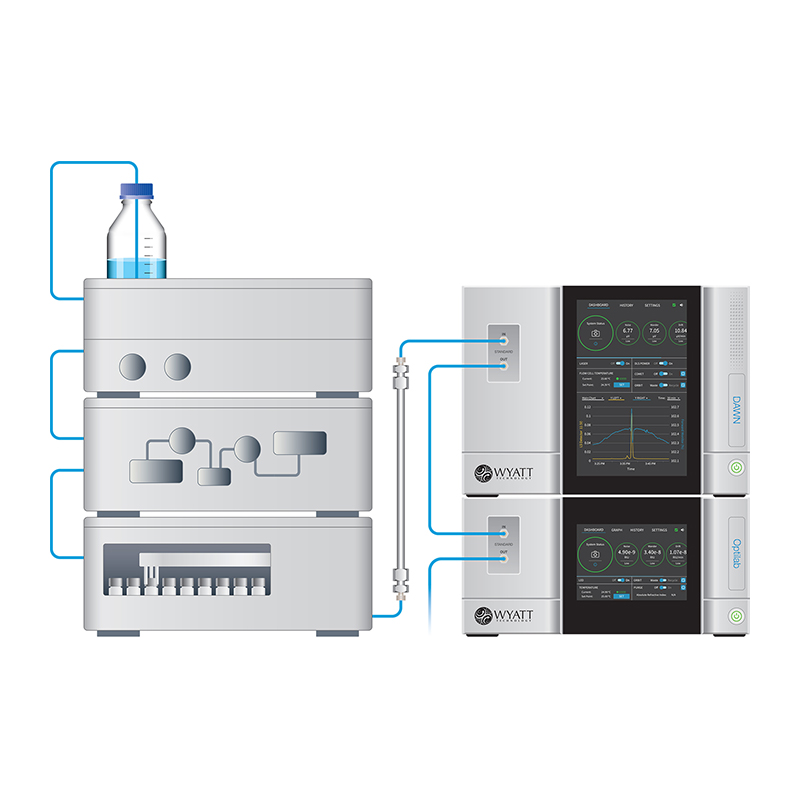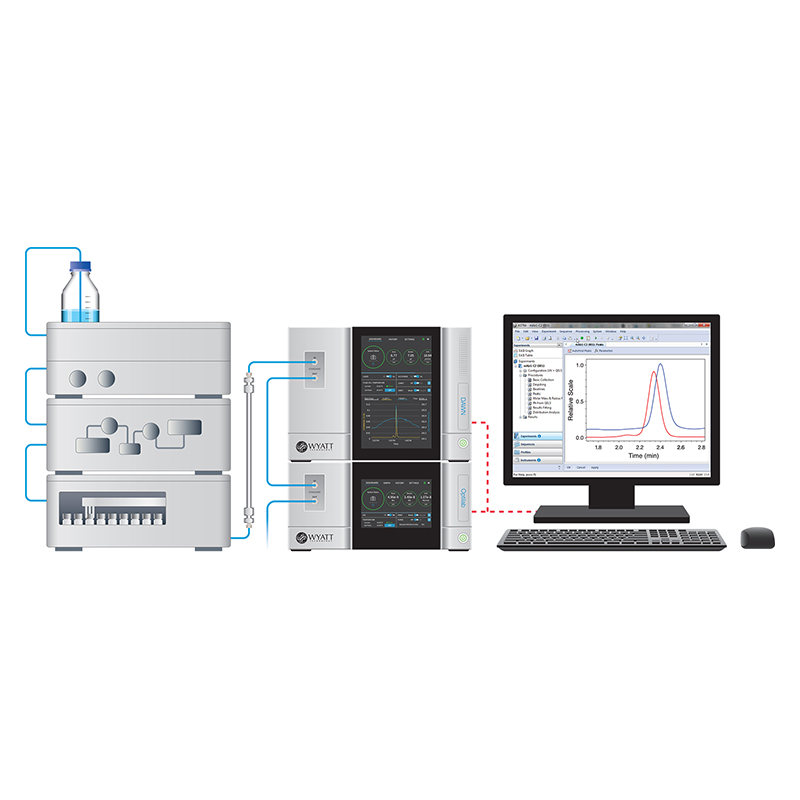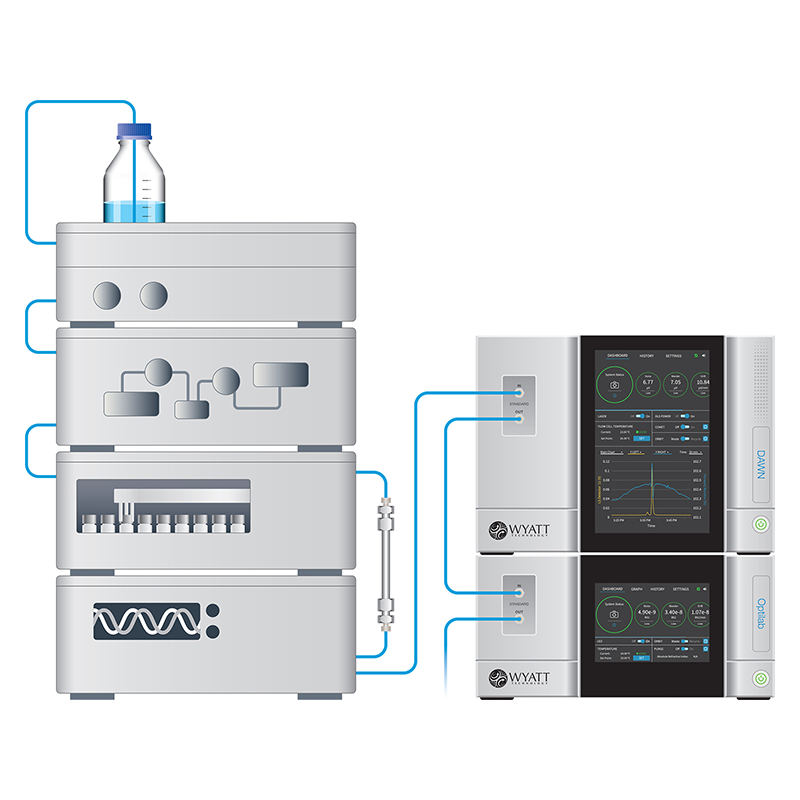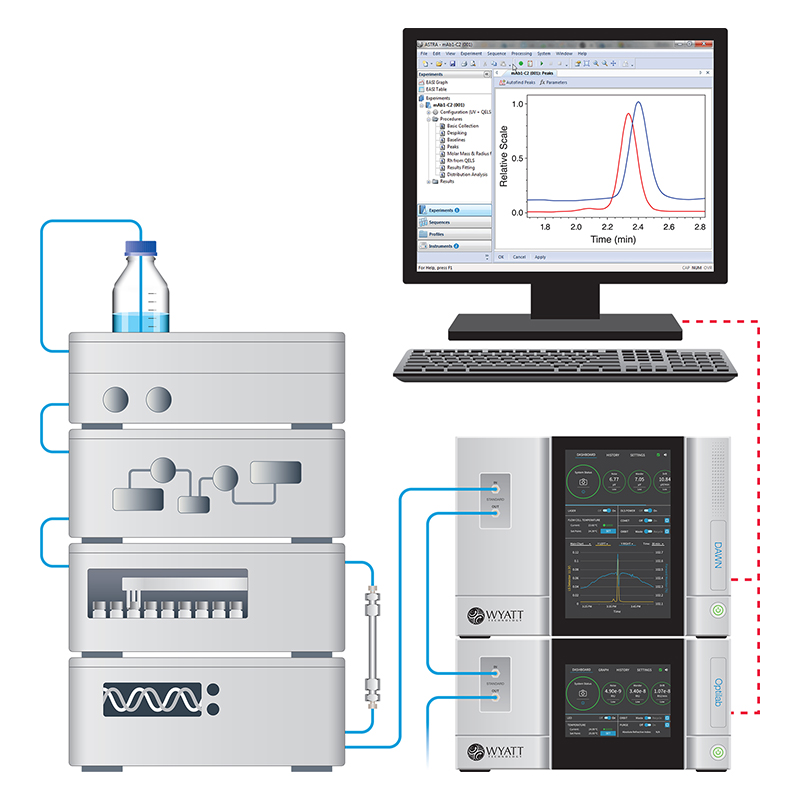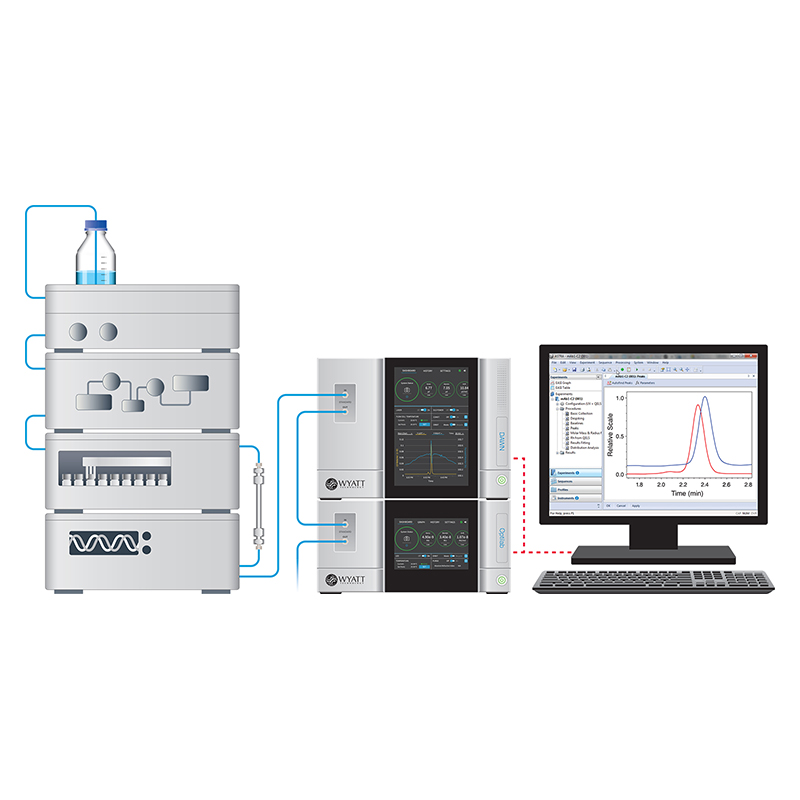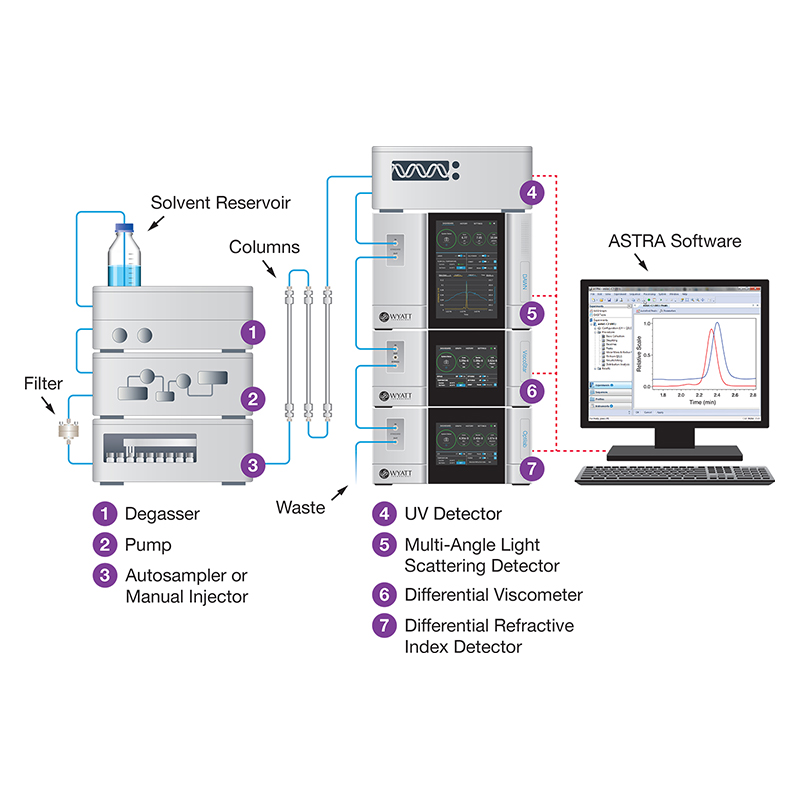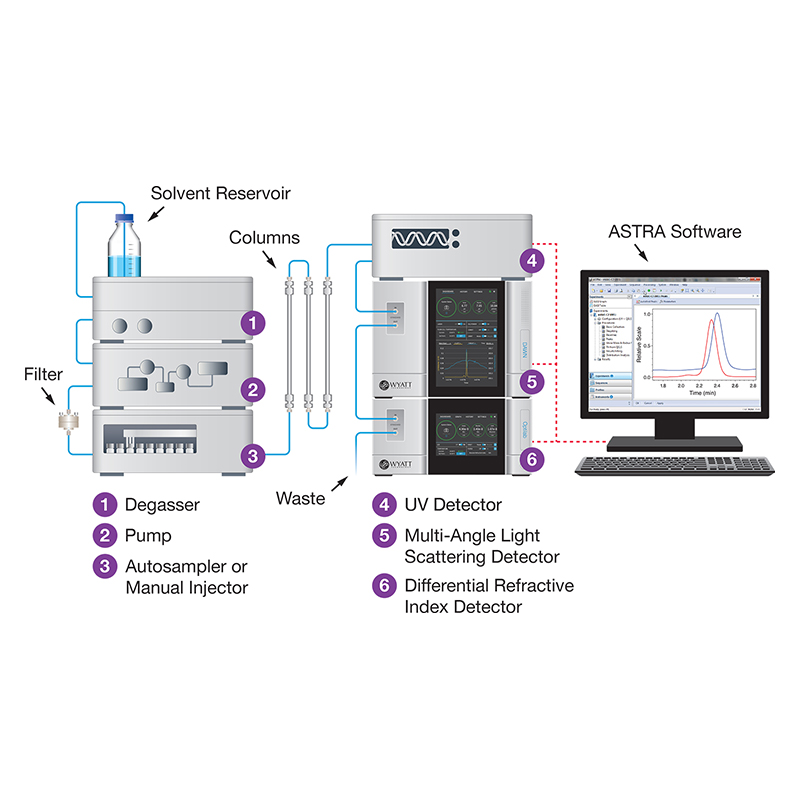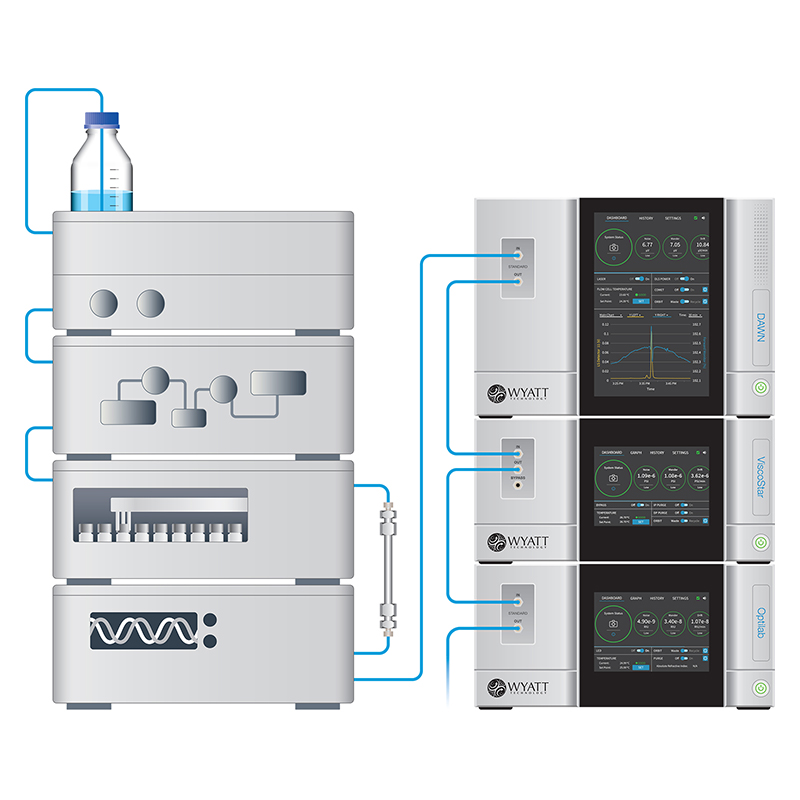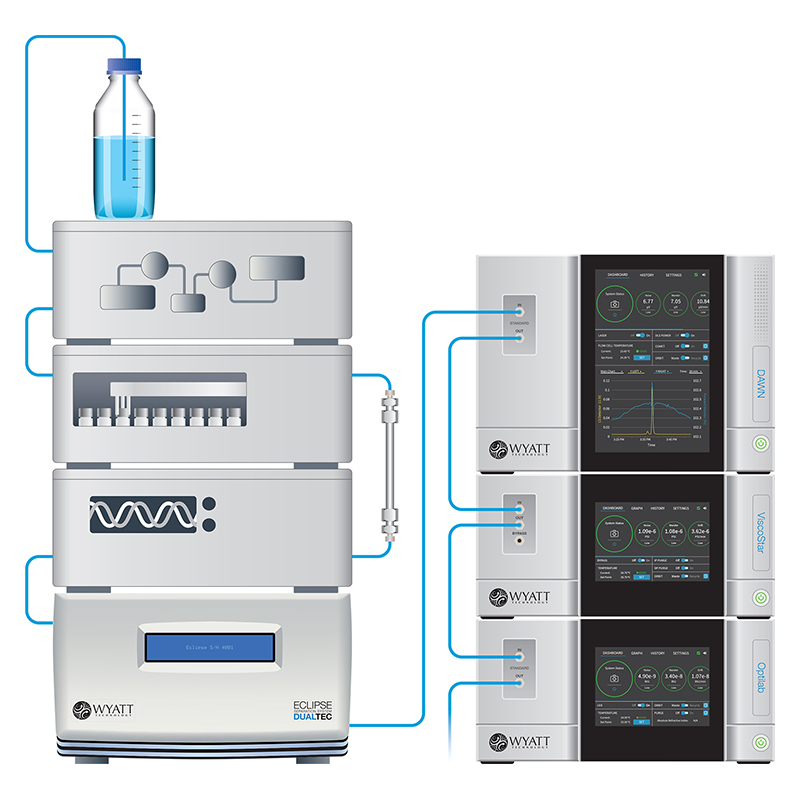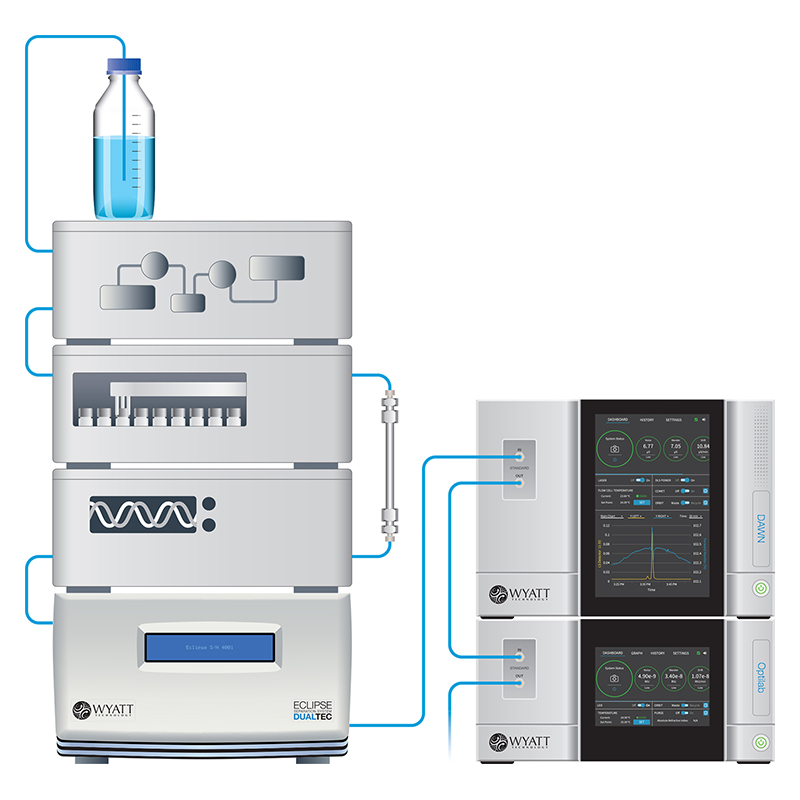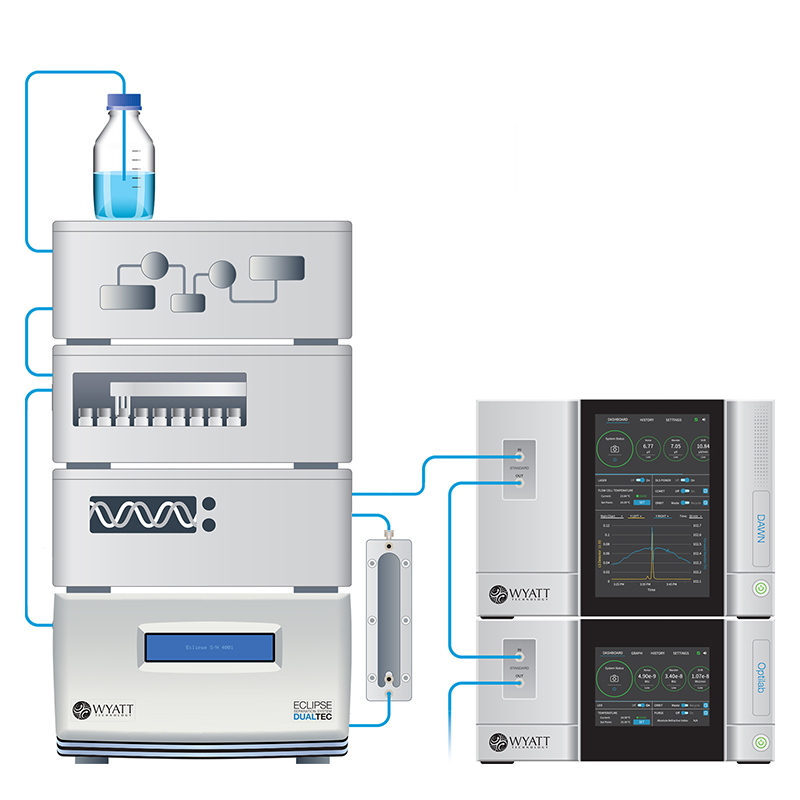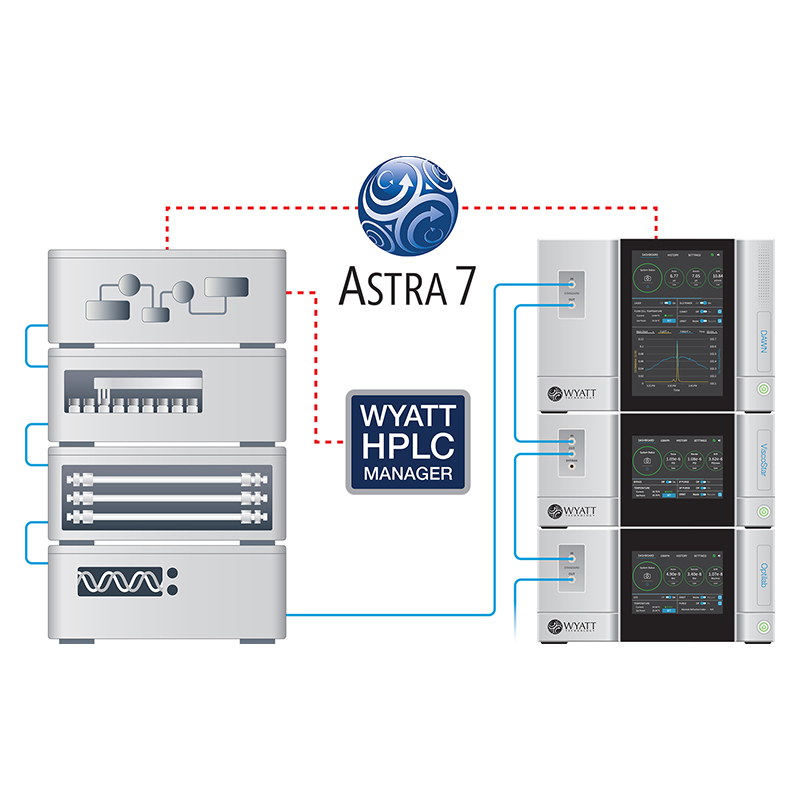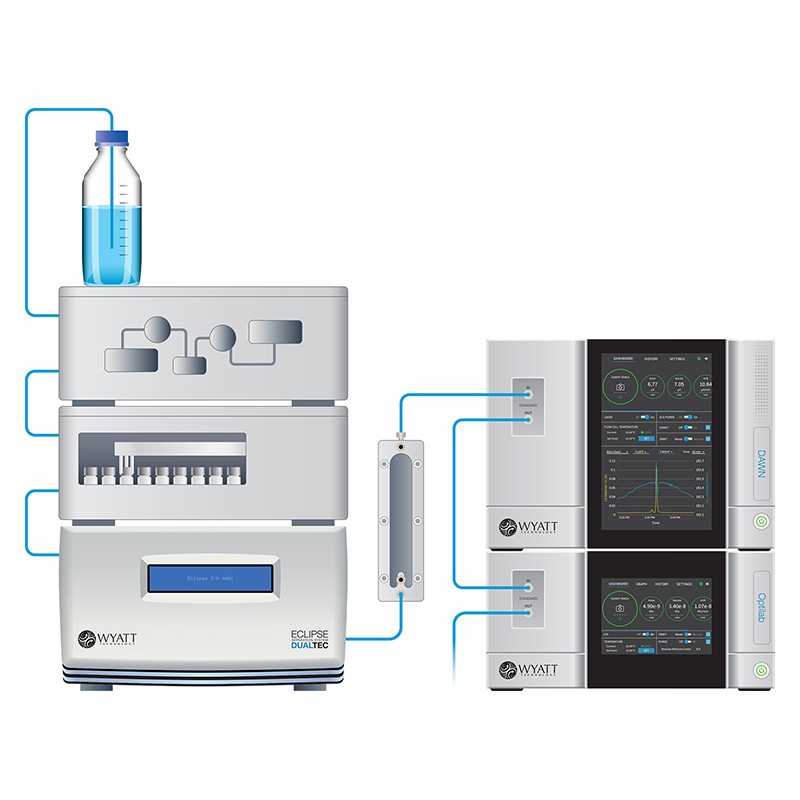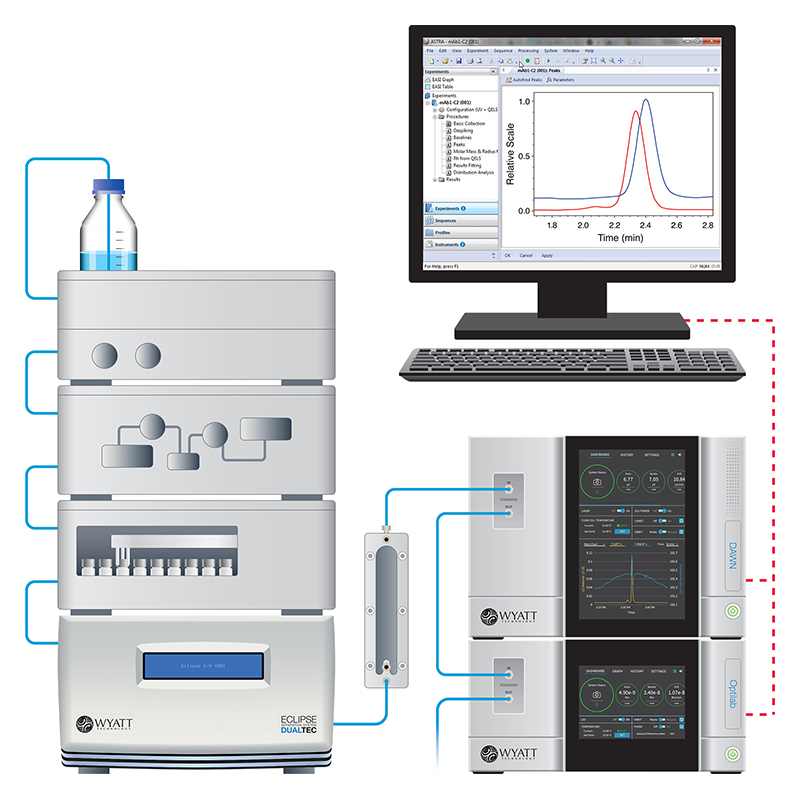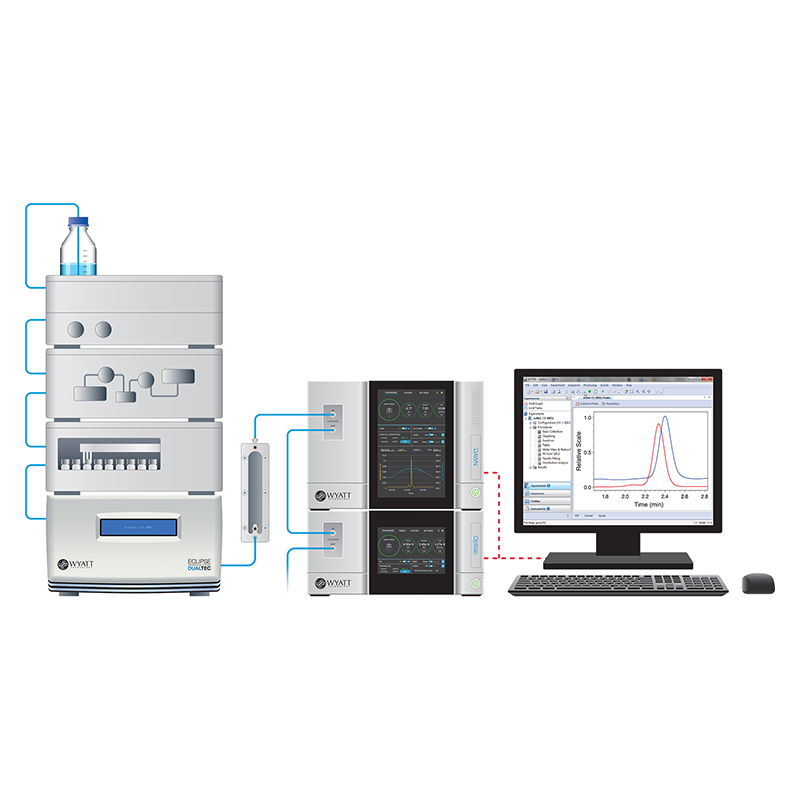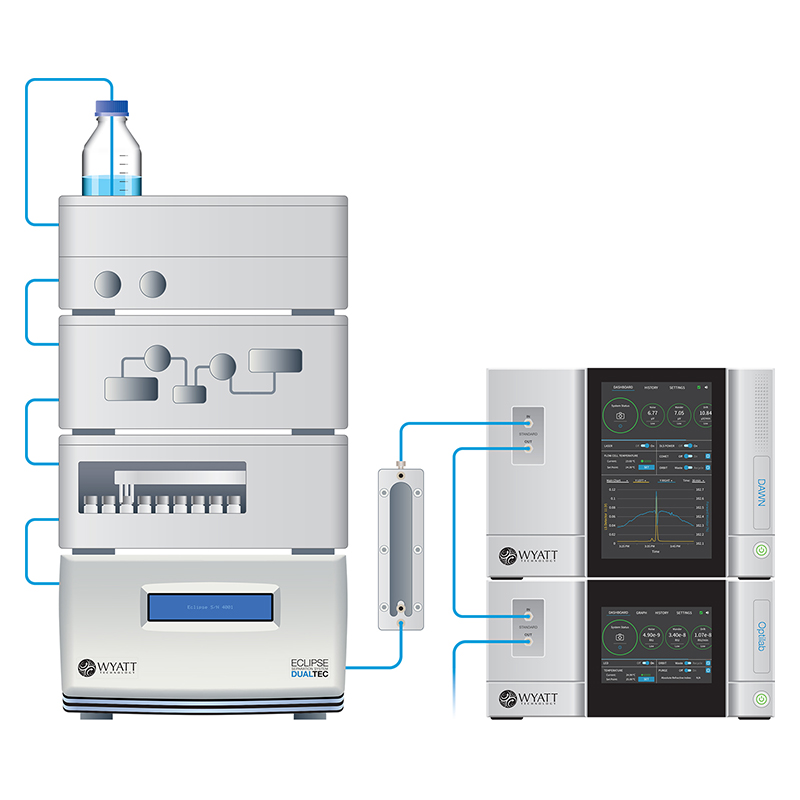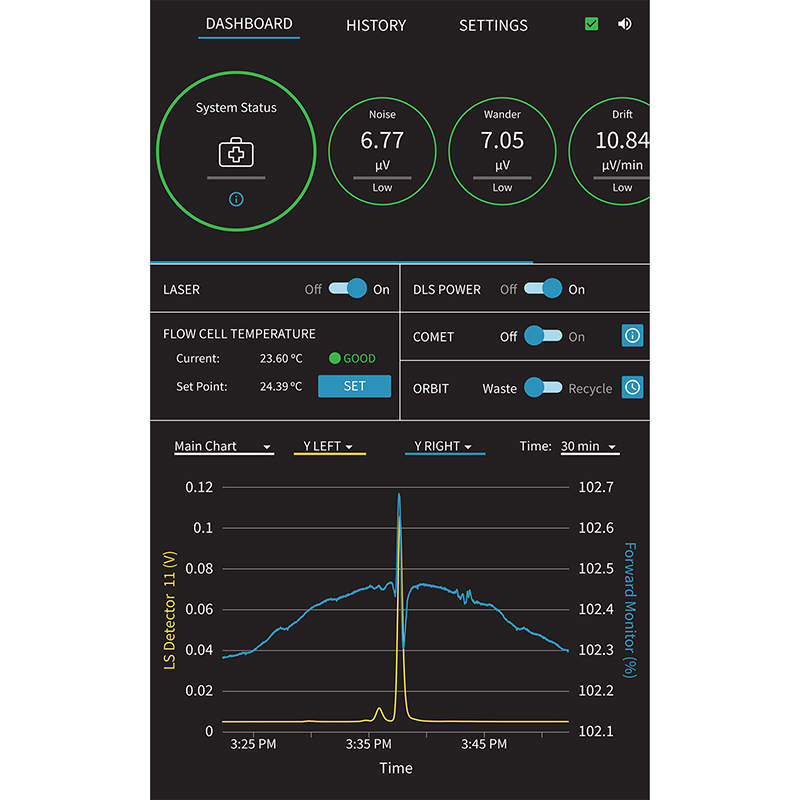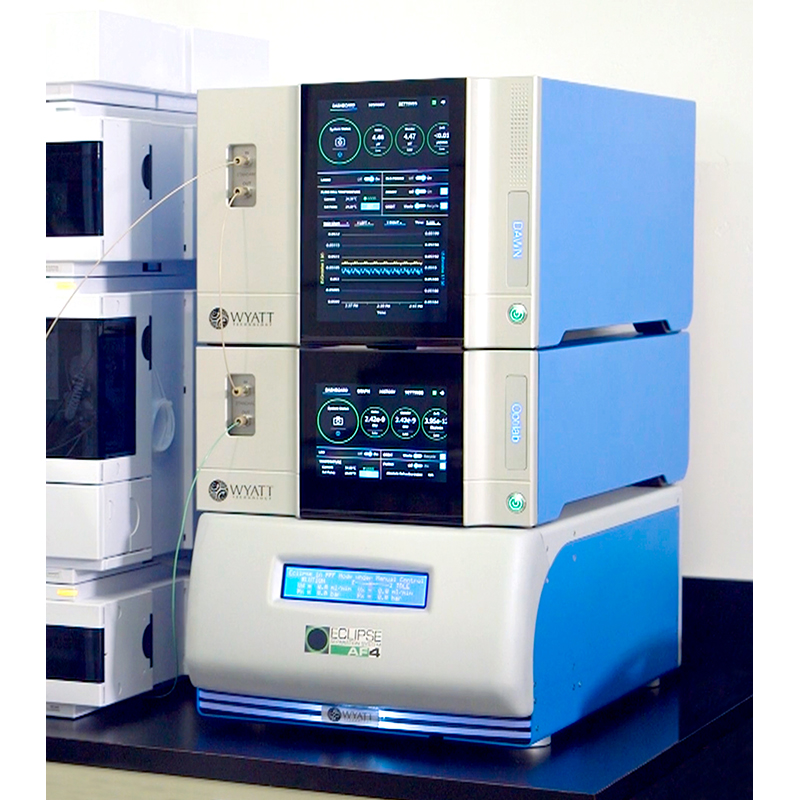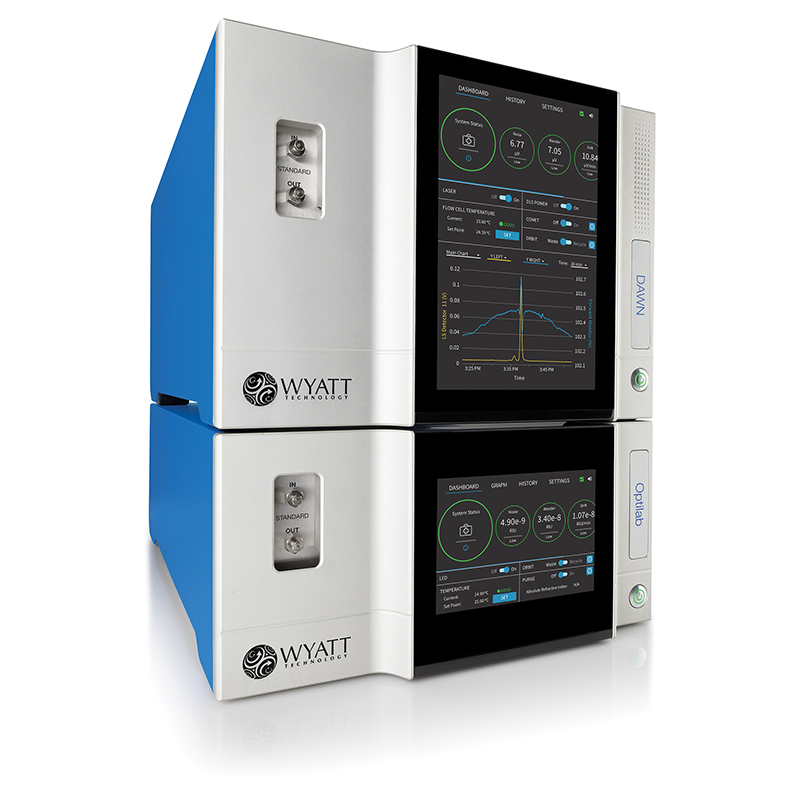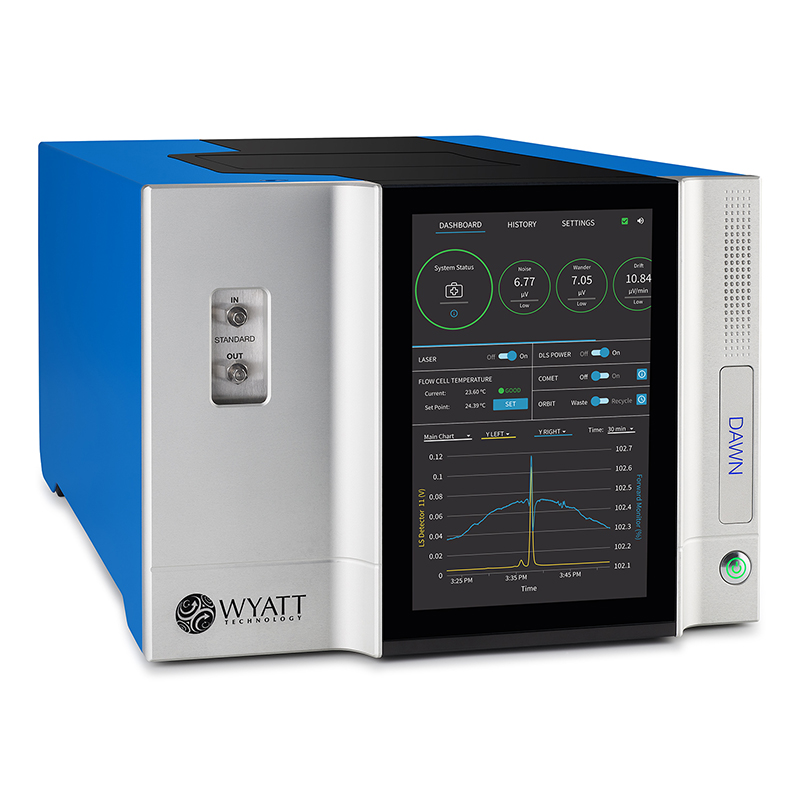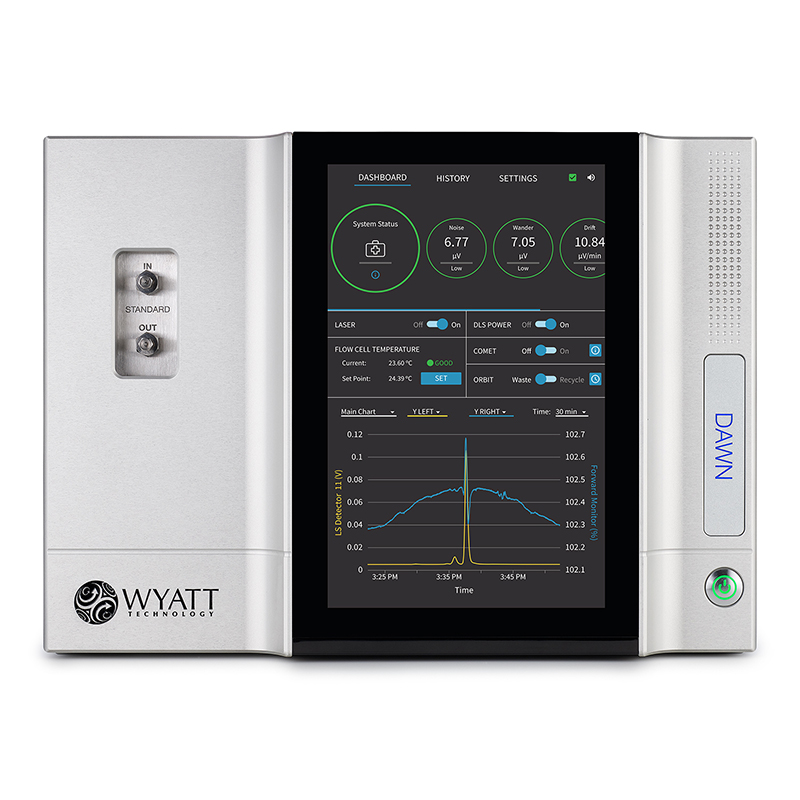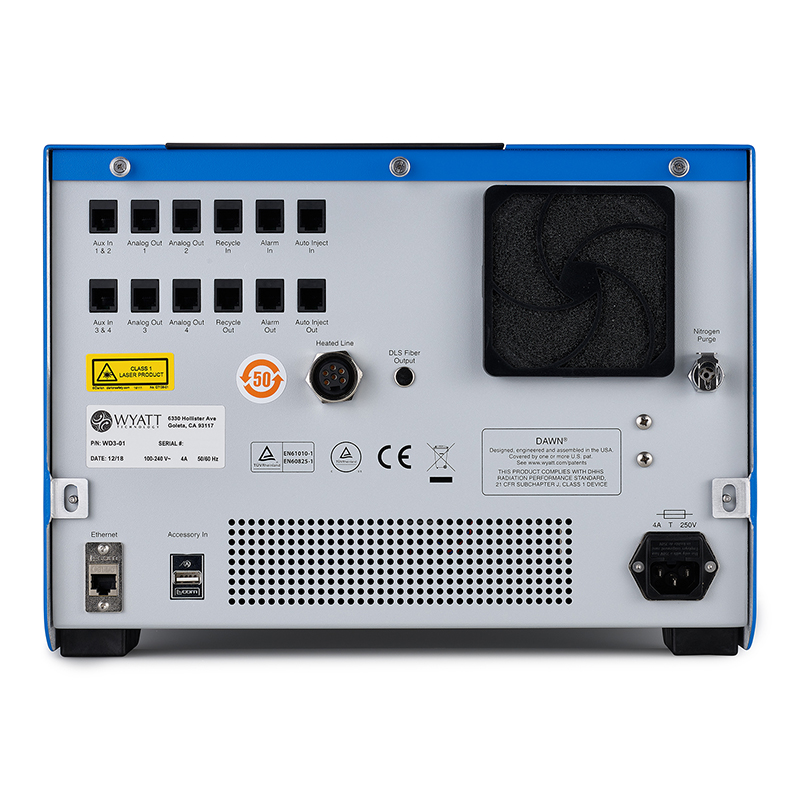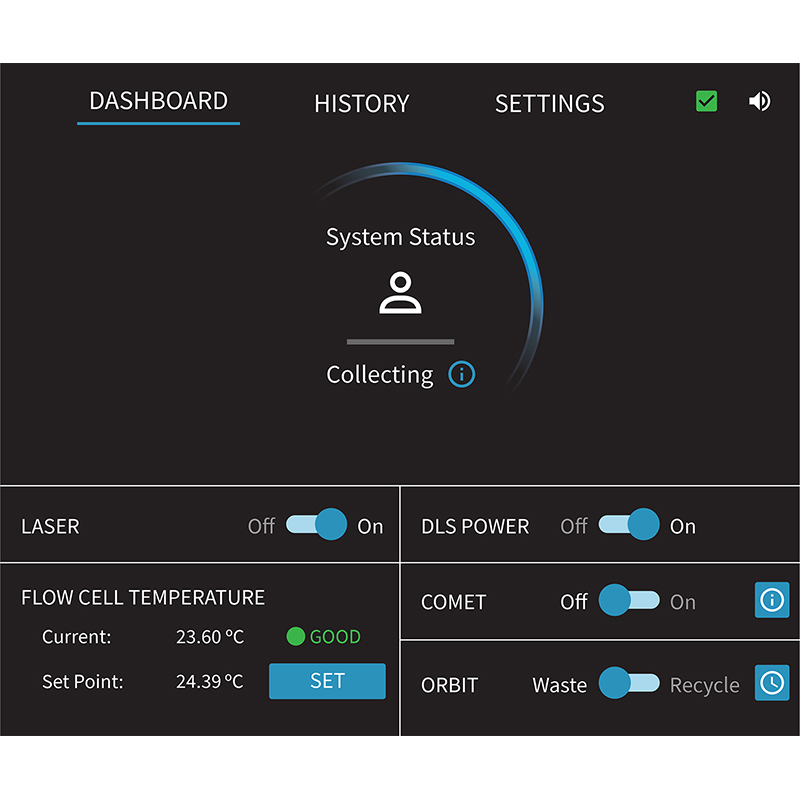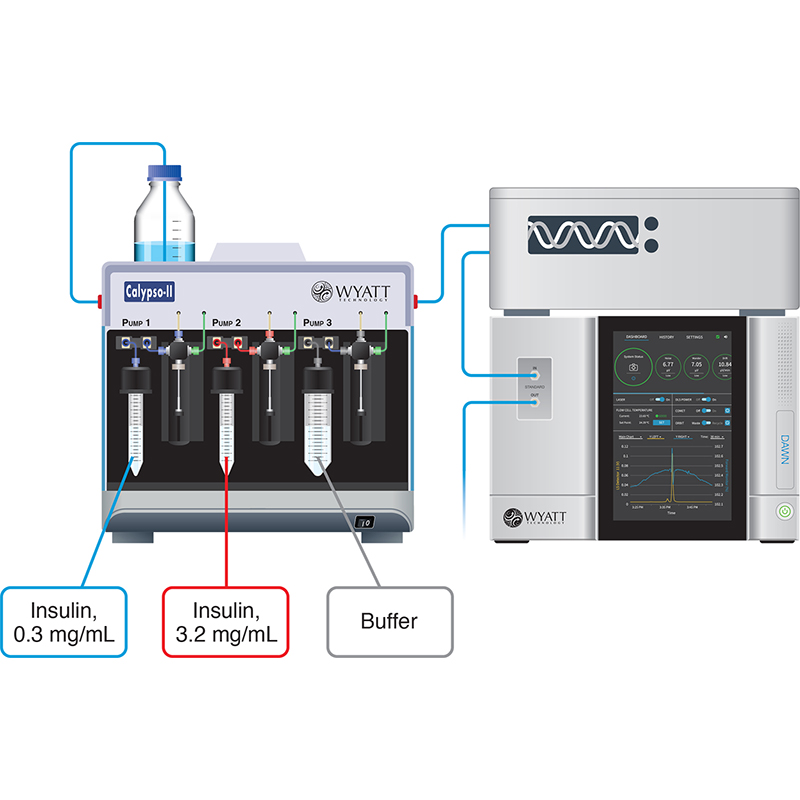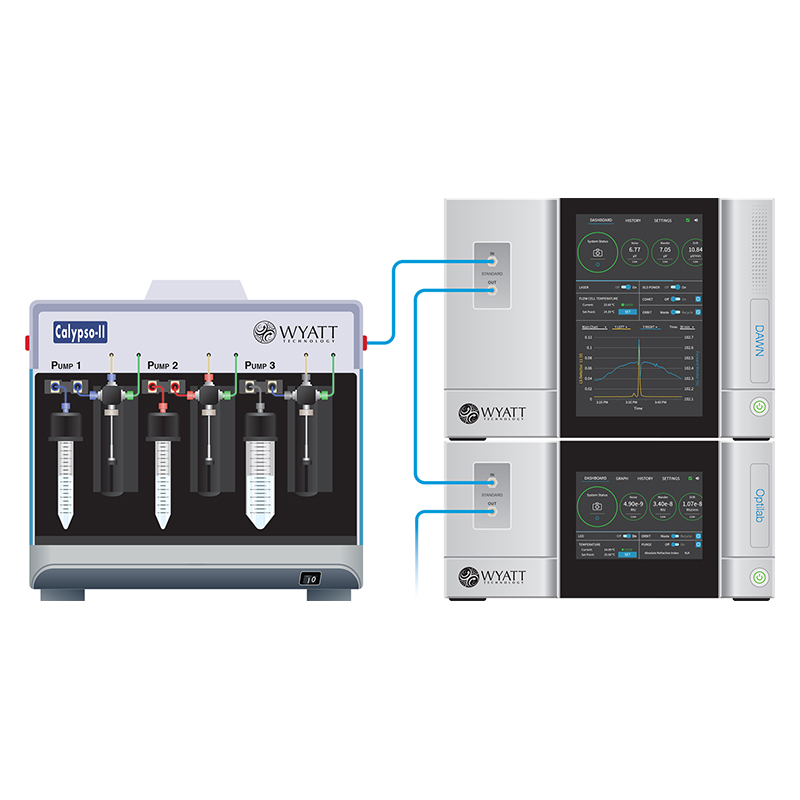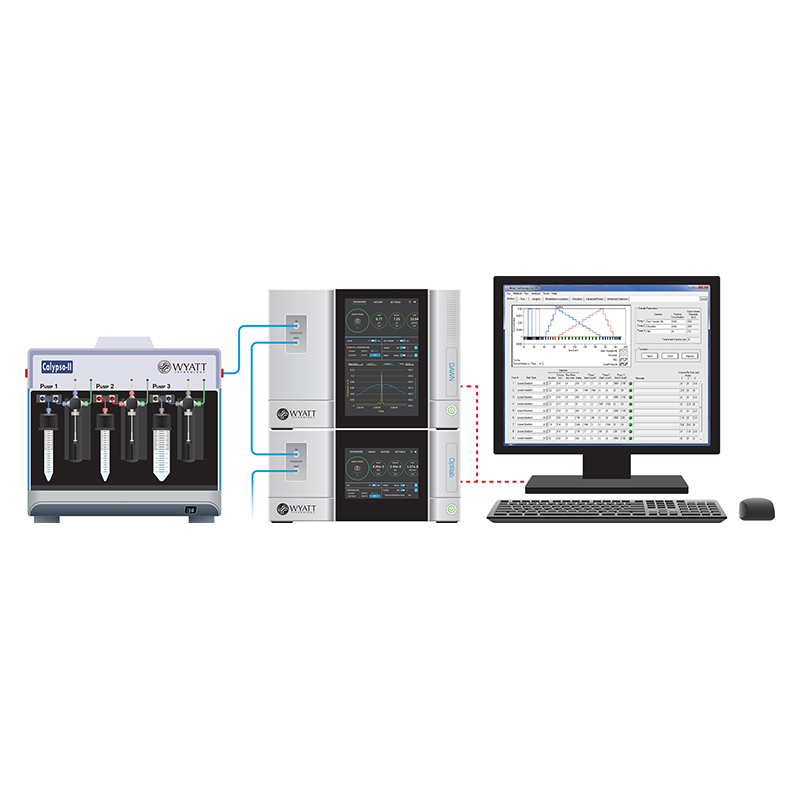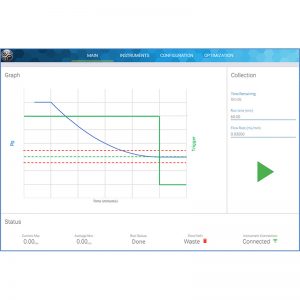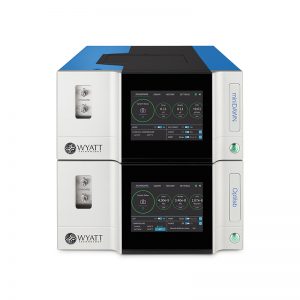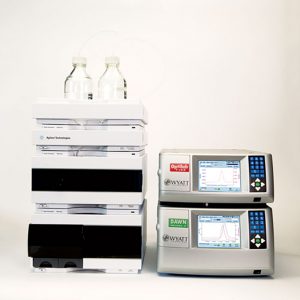Description
Premier MALS
The DAWN® is the premier Multi-Angle static Light Scattering (MALS) detector for absolute characterization of the molar mass and size of macromolecules and nanoparticles in solution. The DAWN offers the highest sensitivity, the widest range of molecular weight, size and concentration, and the largest selection of configurations and optional modules for enhanced capabilities.
Used with SEC-MALS
The DAWN is most often used in conjunction with Gel Permeation Chromatography (GPC-MALS) or Size Exclusion Chromatography (SEC-MALS) or Field-Flow Fractionation (FFF-MALS) to determine distributions of mass, size and composition independent of column calibration by reference standards.
Compatible with ASTRA
The DAWN is accompanied by ASTRA, the most versatile software package available for analysis of online multi-angle and dynamic light scattering.
Overview
SEC-MALS with a DAWN and Optilab characterizes conformation and branching of synthetic and natural polymers larger than 10 nm in rms radius Rg. The addition of a ViscoStar differential viscometer creates a GPC triple-detection system that can analyze molecular conformation and size below the rg limit of 10 nm and determine Mark-Houwink Sakurada coefficients.
The combination of a UV/Vis absorbance detector with a DAWN and Optilab refractive index detector creates a UV-MALS-RI triple-detection system, for analysis of copolymers and protein conjugates (glycoproteins, PEGylated proteins, surfactant-bound membrane proteins, etc.). With the addition of a WyattQELS DLS module for size determination, protein conformation may be analyzed.
- Mw from 200 Da to 1000 MDa
- Sensitivity: 10 ng/mL 100 kDa polystyrene in THF, 0.4 µg/mL BSA (66.4 kDa) in PBS
- Rg from 10 to 500 nm, up to 1000 nm with shape-specific models
- Ultra-stable, high-power laser
The DAWN may also be used in batch (off-line) mode to characterize the weight-average molar mass, z-average size and second virial coefficient of unfractionated samples.
In conjunction with a Calypso CG-MALS system, the DAWN characterizes macromolecular interactions, label-free and immobilization-free: affinity and absolute stoichiometry of self- and hetero-association of simple or complex molecular systems. The Calypso system also automates the determination of second virial coefficients, cross virial coefficients, average molar masses and sizes.
Ultrasonic Cleaning Included
Each DAWN includes an embedded COMET ultrasonic transducer that cleans the flow cell automatically by agitating the fluid and loosening particles from the glass surfaces.
Temperature-Controlled Models
- Ambient model
- Ultra-High-Temperature (UHT) model, from ambient up to +210°C
- Standard Peltier heated/cooled (H/C) model, temperature control from -15°C to +150°C
Online Operation
The DAWN may be positioned downstream of all types of standard GPC, HPLC or FPLC systems for analysis of molar mass and size distributions (see SEC-MALS), and derivatives such as conjugation and conformation analyses, all included in the ASTRA data collection and analysis software. For those systems equipped with a UV, RI, fluorescence or other concentration detector, the DAWN accepts up to 4 analog inputs so a 3rd-party concentration signal may be used in MALS calculations of molar mass. The DAWN is generally set up downstream of a UV detector and upstream of a RI detector.
In most cases it is beneficial to connect an Optilab RI detector to the eluent stream. This permits universal concentration detection regardless of fluorophores or chromaphores. The combination of UV and RI signals, acquired simultaneously, is utilized in ASTRA’s Conjugation Analysis algorithm to characterize binary complexes such as glycoproteins, PEGylated proteins, or block co-polymers.
The DAWN may also be connected to an Eclipse FFF system for characterization of macromolecules and nanoparticles from 1 nm to 1 µm via FFF-MALS.
Both SEC-MALS and FFF-MALS will benefit from an additional WyattQELS module for measuring nanoparticle size via dynamic light scattering (DLS). The WyattQELS utilizes the same laser and flow cell volume as MALS detection. The optical fiber may be located in one of the 4 angular positions.
Both SEC-MALS and FFF-MALS will benefit from an additional WyattQELS module for measuring nanoparticle size via dynamic light scattering (DLS). The WyattQELS utilizes the same laser and flow cell volume as MALS detection. The optical fiber may be located in one of the 4 angular positions.
For analysis of natural and synthetic polymers, the ViscoStar may also be added as well. Differential viscometry is an orthogonal means of determining molar mass and conformation.
Batch Operation
MALS detectors may be operated in batch mode when the analysis does not benefit from separation:
- If the sample is not amenable to separation by SEC or FFF (e.g., very large and diffuse polymers such as PMMA) to measure weight-average molar mass, and size as z-average radius
- In order to validate SEC-MALS measurements:
– to determine if large aggregates or other species are filtered out on the column
– to determine if reversible aggregates dissociate subsequent to dilution on the column or separation channel - In order to characterize macromolecular or nanoparticle complexes which are disrupted by column shear or dilution
- In order to measure binding affinity or reaction kinetics of macromolecules such as protein-ligand interactions
Calypso
Automated sample preparation and delivery system for carrying out and analyzing composition-gradient MALS in a DAWN. Analyses include biomolecular interactions, high-concentration protein-protein interactions, Zimm plots and dn/dc as well as time-resolved MALS. Utilizes the CALYPSO software for interaction analysis.
microCuvette
Allows static and dynamic light scattering measurements to be made simultaneously in a MALS detector using a quartz cuvette, requiring only 10 µL.
NanoFilter Kit
Makes it easy to filter, recover and refilter precious sample. This is especially useful when your total sample volumes are below 300 µL.
Microbatch Kit
Used to inject samples into the flow cell of a MALS detector, and in determining dn/dc with an RI detector.

